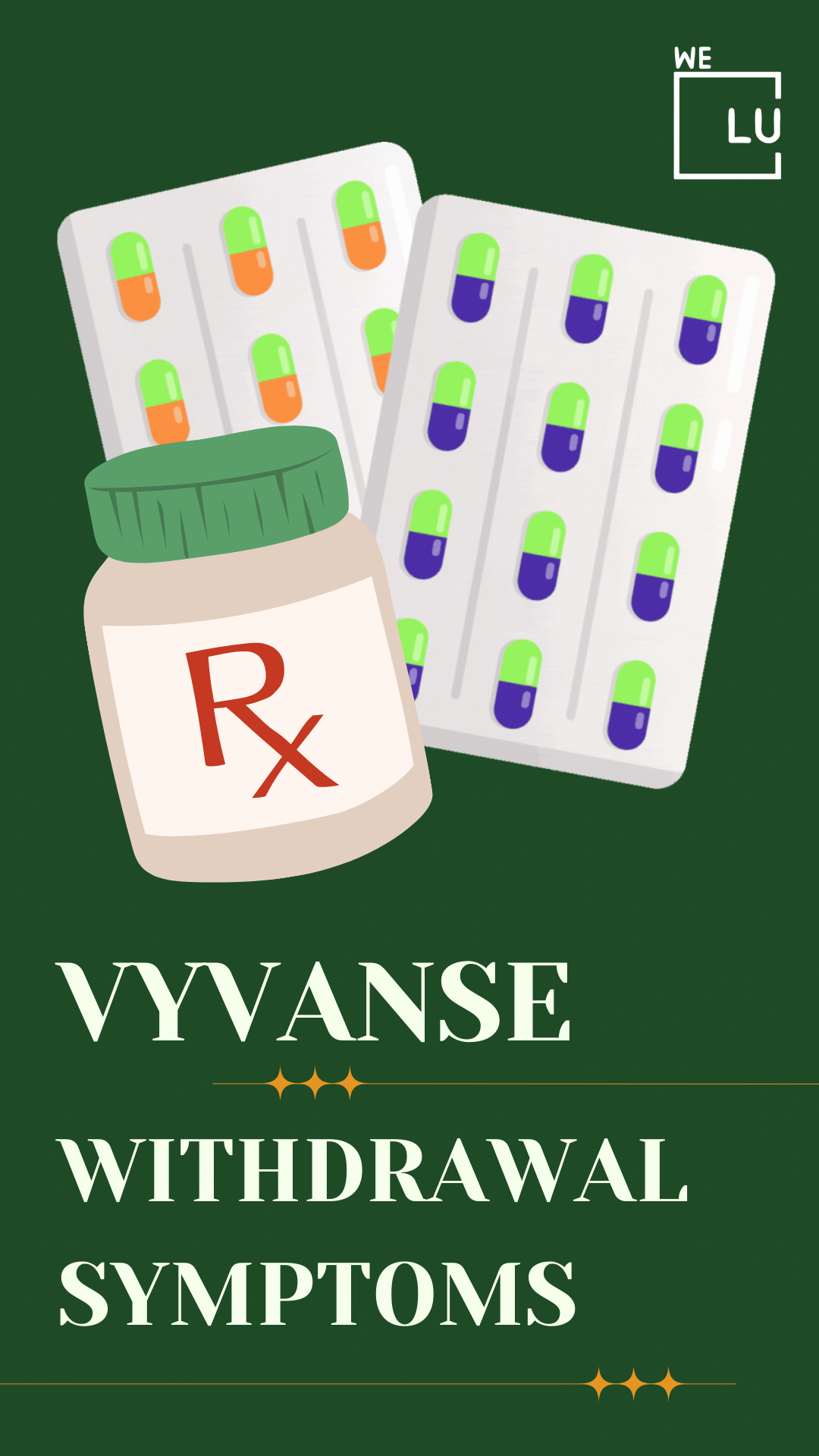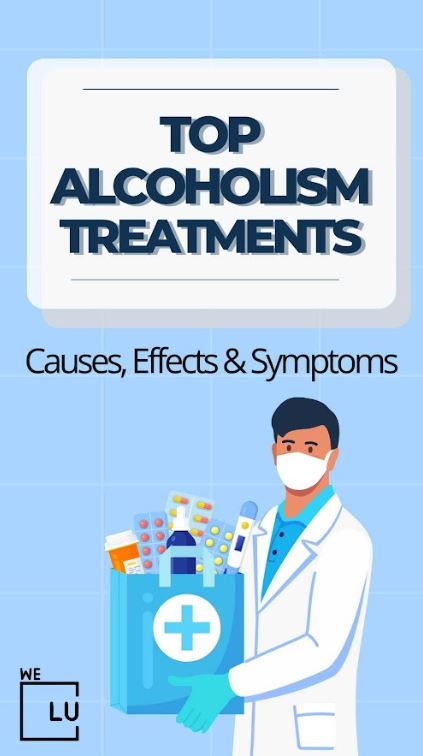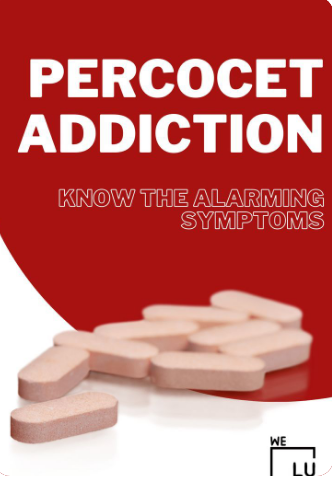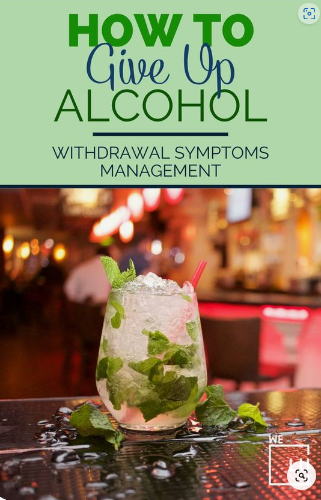What Drugs Are in Ecstasy? Ecstasy vs Molly vs MDMA
What is in ecstasy? Ecstasy the drug is a street name for an illicit substance that typically contains MDMA (3,4-methylenedioxymethamphetamine) as its primary active ingredient. MDMA is a synthetic psychoactive drug that produces feelings of euphoria, increased energy, and altered sensory perception. Other ingredients that may be present in ecstasy tablets include caffeine, ephedrine, ketamine, and other stimulants or hallucinogens.
“Molly” is another slang term used to refer to MDMA, but it typically implies a higher purity or quality of the drug compared to ecstasy tablets. However, there is no guarantee that any drug sold as “molly” actually contains pure MDMA, and it can be just as dangerous as the drugs ecstasy if it is adulterated or contaminated.
MDMA is the chemical compound that is responsible for the effects of both ecstasy and molly, and it is the active ingredient that is sought after by users of these drugs. It is a stimulant and a hallucinogen that acts primarily by increasing the activity of serotonin, a neurotransmitter that is involved in mood regulation and perception. However, the terms “ecstasy” and “molly” are often used interchangeably with MDMA, even though they technically refer to different forms or preparations of the drug.
What Other Drugs Are Cut in Ecstasy?
The drugs ecstasy is often cut with a variety of other drugs or substances, which can vary depending on the region and the specific batch of the drug. Some common additives or contaminants found in ecstasy tablets include:
- Caffeine is a stimulant that can increase alertness and energy.
- Methamphetamine is a highly addictive stimulant that can produce feelings of euphoria and increased energy.
- Ketamine is a dissociative drug that can produce sedative, hallucinogenic, and anesthetic effects.
- Methylone is a synthetic drug that is chemically similar to MDMA and can produce similar effects.
- PMA/PMMA is a synthetic stimulant that is much more toxic than MDMA and can cause severe side effects, including death.
- Bath salts are a group of synthetic cathinone that can produce stimulant and hallucinogenic effects, but can also be highly unpredictable and dangerous.
It is important to note that these additives or contaminants can significantly increase the risks and side effects of taking drugs ecstasy, and can even be life-threatening in some cases. It is always safest to avoid using ecstasy drugs or any other illicit drug altogether.
Ecstasy Side Effects
How long does ecstasy effects last? The effects of ecstasy, also known as MDMA, typically last for 3 to 6 hours, although the duration can vary depending on the dose, the individual’s metabolism, and other factors such as the presence of other drugs in the body.
After ingestion, ecstasy is rapidly absorbed into the bloodstream and distributed throughout the body. Its effects usually begin within 20 to 60 minutes and peak after about 1 to 2 hours. The user may experience increased energy, euphoria, emotional warmth, and a sense of empathy and connectedness with others.
Ecstasy the drug, also known as MDMA, can produce a range of physical and psychological side effects. Some of the most common side effects of ecstasy pills may include the following:
- Increased heart rate and blood pressure.
- Muscle tension and jaw clenching.
- Nausea and vomiting.
- Dehydration and overheating.
- Blurred vision and rapid eye movement.
- Dizziness and lightheadedness.
- Loss of appetite and weight loss.
- Insomnia and restlessness.
- Anxiety and agitation.
- Depression and irritability.
- Impaired memory and concentration.
In some cases, ecstasy drugs can also lead to more severe or life-threatening side effects, which may include the following:
- Seizures and convulsions.
- Cardiovascular complications, such as heart attack or stroke
- Hyperthermia (elevated body temperature) and dehydration, can cause organ damage or failure.
- Serotonin syndrome is a potentially fatal condition that can result from excess serotonin in the brain.
It is important to note that the risks and severity of ecstasy pill side effects can be influenced by a variety of factors, including the dose, purity, and frequency of use, as well as individual factors such as age, weight, and health status. Long-term use of drugs ecstasy can also lead to persistent or permanent changes in brain chemistry and function. Therefore, it is safest to avoid using drugs ecstasy or any other illicit drug altogether.
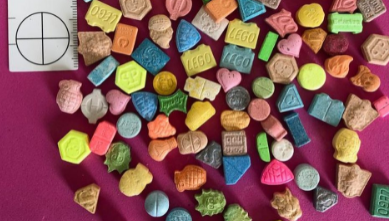
Skip To:
Learn More:
Get Help. Get Better. Get Your Life Back.
Searching for Accredited Drug & Alcohol Rehab Centers Near You? Or Mental Health Support?
Even if you have failed previously, relapsed, or are in a difficult crisis, we stand ready to support you. Our trusted behavioral health specialists will not give up on you. Call us when you feel ready or want someone to speak to about therapy alternatives to change your life. Even if we cannot assist you, we will lead you wherever you can get support. There is no obligation. Call our hotline today.
FREE Addiction Hotline – Call 24/7Drugs Ecstasy Addiction Statistics
The thought of over twenty thousand ecstasy/molly/MDMA users near death’s door being hauled in by ambulances is certainly troubling. People on psychoactive drugs often come to the hospital because they think something might be wrong; they get scared. With the drugs ecstasy, a lot of ‘got scared’ stories appear to be happening. Numbers alone don’t really tell the whole story, however: Where things get interesting is not how many users encounter medical problems, but why they do. The distribution of injuries and deaths is not random throughout the user population; it is associated with specific risk factors and behaviors.
10%
Over ten percent of seniors in high school have used ecstasy/molly/MDMA at least once.
Source: NIH
2.6 million
In 2020, 0.9% (or over 2.6 million) of those 12 and older reported using Molly (Ecstasy) in the previous 12 months.
Source: NIH
1.1%
A projected 0.6% of eighth-graders, 0.7% of tenth-graders, and 1.1% of twelve-year-old reported using ecstasy in the previous year in 2021.
Source: NIH
Drugs Ecstasy Facts
What is Ecstasy Drugs/ MDMA / Molly?
Ecstasy acts as both a stimulant and psychedelic,
producing an energizing effect, distortions in
time and perception, and enhanced enjoyment of
tactile experiences.
Adolescents and young adults use it to reduce
inhibitions and to promote euphoria, feelings of closeness, empathy, and sexuality.
What is its origin?
Ecstasy is a synthetic chemical made in
labs. Seized MDMA in the U.S. is primarily
manufactured in, and smuggled across U.S.
borders from, clandestine laboratories in Canada
and, to a lesser extent, the Netherlands. A small
number of MDMA clandestine laboratories have
also been identified operating in the U.S.
Nickname for drug ecstasy
Common ecstasy drug names may include the following:
- Adam.
- Beans.
- Clarity.
- Disco Biscuit.
- E.
- Eve.
- Go.
- Hug Drug.
- Lover’s Speed.
- MDMA.
- Peace.
- STP.
- X.
- XTC.
What kind of drug is ecstasy?
Ecstasy, also known as MDMA (3,4-methylenedioxymethamphetamine), is a synthetic psychoactive drug that alters mood and perception. It belongs to a class of drugs called entactogens or empathogens, which are known for their ability to enhance feelings of empathy, emotional openness, and social connection.
What does it look like?
Molly/MDMA/Ecstasy is mainly distributed in tablet form. MDMA tablets are often sold with logos, creating brand names for users to seek out. The colorful pills are often hidden among colorful candies. MDMA is also distributed in capsules, powder, and liquid forms.
How is it abused?
Ecstasy use mainly involves swallowing tablets
(50-150 mg), which are sometimes crushed and
snorted, occasionally smoked, but rarely injected.
MDMA is also available as a powder.
Ecstasy users usually take the drug by “stacking”
(taking three or more tablets at once) or by
“piggy-backing” (taking a series of tablets over
a short period of time). One trend among young
adults is “candy flipping,” which is the co-abuse of
MDMA and LSD.
Molly/MDMA/Ecstasy is considered a “party drug. As with many other drugs of abuse, Ecstasy is rarely used alone. It is common for users to mix ecstasy with other substances, such as alcohol and marijuana.
What is its legal status in the United States?
What is the ecstasy drug classification? MDMA/Molly/ Ecstasy is a Schedule I drug under the Controlled Substances Act, meaning it has a high potential for abuse, no currently accepted medical use in treatment in the United States, and a lack of accepted safety for use under medical
supervision.
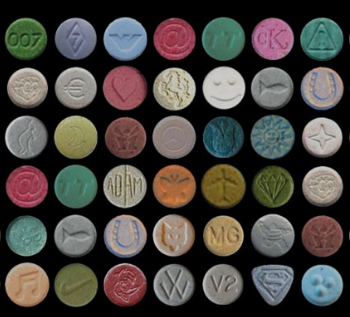
Ecstasy Effects on Brain and Mental Health
Ecstasy drugs, also known as MDMA, can have both short-term and long-term effects on mental health. In the short term, ecstasy can produce intense feelings of euphoria, empathy, and sociability, as well as increased sensory perception and a sense of emotional openness. However, these effects from ecstasy are often followed by a “crash” or “comedown” period in which users may experience irritability, depression, and fatigue.
Ecstasy long term effects can lead to a range of mental health issues, which may include the following:
- Anxiety disorders. Ecstasy can increase anxiety levels, and chronic use can lead to the development of anxiety disorders such as panic disorder or generalized anxiety disorder.
- Depression. “Ecstasy effect on brain” often includes depression. Ecstasy can deplete the brain’s supply of serotonin, a neurotransmitter that is involved in mood regulation. This can lead to depression, which can persist even after the effects of the drug have worn off.
- Cognitive impairment. Ecstasy brain effects may include long-term changes in brain chemistry and function, which can result in impaired memory, attention, and decision-making skills.
- Psychosis. Ecstasy drug effects may include psychosis. Chronic ecstasy use can lead to the development of psychotic symptoms, such as hallucinations, delusions, and disordered thinking.
It is also important to note that ecstasy use can worsen pre-existing mental health conditions, such as bipolar disorder or schizophrenia, and can increase the risk of suicide and self-harm. Therefore, it is safest to avoid using ecstasy or any other illicit drug altogether, especially if you have a history of mental health issues.

Get Your Life Back
Find Hope & Recovery. Get Safe Comfortable Detox, Addiction Rehab & Mental Health Dual Diagnosis High-Quality Care at the We Level Up Treatment Centers Network.
Hotline (877) 378-4154Effects of Ecstasy on Your Physical Health
Ecstasy, also known as MDMA, can have a range of physical effects of ecstasy on the body. Some of the short-term effects of ecstasy use may include the following:
- Increased heart rate and blood pressure. “Ecstasy effect on the body” can cause a surge in heart rate and blood pressure, which can be dangerous for individuals with pre-existing cardiovascular conditions.
- Muscle tension and jaw clenching. Ecstasy can cause involuntary muscle contractions, particularly in the jaw and neck muscles, which can lead to dental problems and muscle strain.
- Dehydration and overheating. Ecstasy can increase body temperature and decrease the body’s ability to regulate its temperature, which can lead to dehydration and overheating, a potentially life-threatening condition known as hyperthermia.
- Nausea and vomiting. Ecstasy can cause nausea and vomiting, which can lead to electrolyte imbalances and dehydration.
- Blurred vision and rapid eye movement. Ecstasy can cause eye twitching and rapid eye movements, which can result in blurred vision and eye strain.
In the long term, ecstasy use can lead to more serious and potentially irreversible physical health issues, which may include the following:
- Cardiovascular complications. Ecstasy can cause long-term damage to the heart and blood vessels, increasing the risk of heart attack, stroke, and other cardiovascular problems.
- Liver and kidney damage. Ecstasy use can cause damage to the liver and kidneys, which can result in liver or kidney failure.
- Impaired immune function. Ecstasy can suppress immune function, increasing the risk of infections and illnesses.
- Neurological damage. Ecstasy can cause long-term changes in brain chemistry and function, which can result in neurological problems such as tremors, seizures, and memory loss.
It is important to note that the risks and severity of ecstasy’s physical effects can be influenced by a variety of factors, including the dose, purity, and frequency of use, as well as individual factors such as age, weight, and health status. Therefore, it is safest to avoid using ecstasy or any other illicit drug altogether.
Comfortable Facilities & Amenities
High-Quality Addiction & Mental Health Rehabilitation Treatment
Rehab Centers TourRenowned Addiction Centers. Serene Private Facilities. Inpatient rehab programs vary.
Addiction Helpline (877) 378-4154Proven recovery success experience, backed by a Team w/ History of:
15+
Years of Unified Experience
100s
5-Star Reviews Across Our Centers
10K
Recovery Success Stories Across Our Network
- Low Patient to Therapist Ratio
- Onsite Medical Detox Center
- Comprehensive Dual-Diagnosis Treatment
- Complimentary Family & Alumni Programs
- Coaching, Recovery & Personal Development Events
Ecstasys Effect Sexually
Ecstasy, also known as MDMA, can have a range of effects on sexual function and behavior. In the short term, ecstasy can produce feelings of heightened sexual arousal, increased sociability, and reduced inhibitions, which can lead to increased sexual activity. However, ecstasy can also have negative effects on sexual function, including:
- Erectile dysfunction. Ecstasy can interfere with the body’s ability to achieve and maintain an erection, particularly in men.
- Delayed ejaculation. Ecstasy can prolong the time it takes to reach orgasm or prevent orgasm altogether, particularly in men.
- Decreased libido. Ecstasy can decrease sexual desire or arousal, particularly in women.
- Sexual dysfunction. Chronic use of ecstasy can lead to long-term sexual dysfunction, including impotence, infertility, and reduced sexual pleasure.
It is important to note that the effects of ecstasy on sexual function can vary widely depending on the individual and the circumstances of use. Furthermore, ecstasy use can increase the risk of unprotected sex and exposure to sexually transmitted infections (STIs). Therefore, it is safest to avoid using ecstasy or any other illicit drug altogether, especially if you are engaging in sexual activity.

World-class, Accredited, 5-Star Reviewed, Effective Addiction & Mental Health Programs. Complete Behavioral Health Inpatient Rehab, Detox plus Co-occuring Disorders Therapy.
CALL (877) 378-4154End the Addiction Pain. End the Emotional Rollercoaster. Get Your Life Back. Start Drug, Alcohol & Dual Diagnosis Mental Health Treatment Now. Get Free No-obligation Guidance by Substance Abuse Specialists Who Understand Addiction & Mental Health Recovery & Know How to Help.
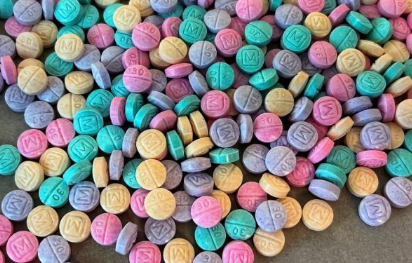
Drug Test for Ecstasy
Does ecstasy show up on a drug test? Yes, ecstasy can show up on a drug test. Standard drug tests typically screen for the presence of MDMA, the active ingredient in ecstasy, as well as its metabolites. MDMA and its metabolites can be detected in urine, blood, hair, and saliva for varying amounts of time depending on the individual and the frequency and amount of use.
How long do the effects of ecstasy last? MDMA can be detected in urine for up to 2-4 days after use, while its metabolites can be detected for up to 5 days or longer in chronic users. In blood, MDMA can be detected for up to 24 hours after use, while in hair, it can be detected for up to 90 days or longer after use. Saliva testing can detect the presence of MDMA for up to 1-2 days after use.
It is important to note that ecstasy drug testing methods and accuracy can vary, and false-positive and false-negative results can occur. If you are concerned about the possibility of testing positive for ecstasy, it is best to avoid using the drug altogether.
Experience Transformative Recovery at the We Level Up Treatment Center.
See our authentic success stories. Get inspired. Get the help you deserve.



Start a New Life
Begin with a free call to an addiction & behavioral health treatment advisor. Learn more about our dual-diagnosis programs. The We Level Up treatment center network delivers various recovery programs at each treatment facility. Call to learn more.
- Personalized Care
- Caring Accountable Staff
- Comfortable Amenities
- Licensed & Accredited
- Renowned w/ 5-Star Reviews
We’ll Call You
Ecstasy Addiction Treatment
First and foremost, if you think a loved one is abusing molly, you should research the substances and their associated addiction to understand better what your loved one needs. Next, you must plan an intervention to provide your loved ones with options to battle the effects from ecstasy addiction in a safe and supportive environment. During this intervention, offer compassion and support instead of judgment. Lastly, show your support throughout the entire treatment process.
In addition, prolonged drug use can have severe physical and psychological effects on you, so it is essential to seek treatment as soon as possible. Inpatient drug rehab offers intensive care that can help you promptly get through the early stages of withdrawal.
Ecstasy Detox
Medical detox is often considered the first stage of treatment. It will help you navigate the complicated withdrawal symptoms but doesn’t address patterns of thought and behavior contributing to drug use. Various treatment approaches and settings can help provide the ongoing support necessary to maintain long-term sobriety after you complete the molly detox.
Cravings are very common during drug detox and can be challenging to overcome. This often leads to relapse. Constant medical care provided during inpatient treatment helps prevent relapse. Clinicians can give medication and medical expertise to lessen cravings and molly symptoms of withdrawal.
Inpatient Ecstasy Addiction Rehab
There isn’t one treatment approach or style that will suit everyone. Treatment should speak to the needs of the individual. Inpatient rehab and addiction treatment aren’t just about drug use. the goal is to help the patient stop using molly and other substances, but drug rehab should also focus on the whole person’s needs.
Addiction is a complex but treatable disease that affects brain function and behavior. When someone or their family is considering different treatment facilities, they should account for the complexity of addiction and the needs of the individual. The objective of attending an inpatient rehab center for addiction treatment is to stop using the drug and re-learn how to live a productive life without it.
Following a full medical detox, most people benefit from inpatient rehab. Inpatient drug rehab can last anywhere from 28 days to several months. Patients stay overnight in the rehab facility and participate in intensive treatment programs and therapy. Once someone completes rehab, their addiction treatment team will create an aftercare plan, which may include continuing therapy and participation in a 12-step program like Narcotics Anonymous.
Psychotherapy
Many rehab programs will also have early morning classes or programs. Group sessions occur during inpatient rehab, as do individual therapy sessions. Family therapy may be part of inpatient rehab when it’s feasible. Alternative forms of therapy may be introduced during inpatient rehab, like a holistic therapy program, yoga for addiction recovery, or an addiction treatment massage therapy.
Several different modalities of psychotherapy have been used in the treatment of mental health disorders along with addiction, including:
- Cognitive Behavioral Therapy (CBT) – is an effective treatment that involves changing both the patterns of negative thoughts and the behavioral routines which are affecting the daily life of the depressed person for various forms of depression.
- Dialectical Behavioral Therapy – is a comprehensive mental health and substance abuse treatment program whose ultimate goal is to aid patients in their efforts to build a life worth living. The main goal of DBT is to help a person develop what is referred to as a “clear mind.”
- Solution-focused therapy is an approach interested in solutions that can be quickly implemented with a simple first step leading to further positive consequences.
Dual Diagnosis Treatment
Drug abuse and mental health disorders often co-occur. Traumatic experiences can often result in mental health disorders and substance abuse. Dual-diagnosis rehabilitation treats both of these issues together. The best approach for the treatment of dual diagnosis is an integrated system. This strategy treats both the substance abuse problem and the mental disorder simultaneously. Regardless of which diagnosis (mental health or substance abuse problem) came first, long-term recovery will depend mainly on the treatment for both diseases done by the same team or provider.
Ecstasy Addiction Rehab Near Me
Please, do not try to detox on your own. The detox process can be painful and difficult without medical assistance. However, getting through the detox process is crucial for continued treatment. We Level Up provide proper care with round-the-clock medical staff to assist your recovery through our opioid addiction treatment program medically. So, reclaim your life, and call us to speak with one of our treatment specialists. Our counselors know what you are going through and will answer any of your questions.
Ecstasy addiction is a condition that can cause major health problems, such as an overdose. We Level Up NJ rehab treatment & detox center can provide you, or someone you love, the tools to recover from this with professional and safe treatment. Feel free to call us to speak with one of our counselors. We can inform you about this condition and clarify issues like withdrawal symptoms. Our specialists know what you are going through. Please know that each call is private and confidential.
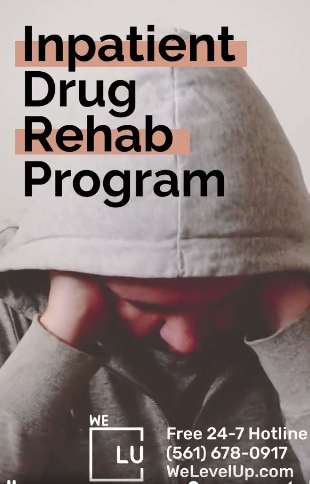
10 Popular “What Drugs Are in Ecstasy?“ FAQs
-
Is ecstasy addictive?
Ecstasy drug increases the release of the neurotransmitter dopamine in the brain, which is associated with the brain’s reward system and can lead to feelings of pleasure and motivation. This can create a psychological dependence on the drug, where a person may feel compelled to use it in order to experience these pleasurable effects again.
-
What class of drugs is ecstasy?
Ecstasy drugs, also known as MDMA (3,4-methylenedioxymethamphetamine), is classified as Schedule I controlled substance in the United States. Schedule I drugs are considered to have a high potential for abuse, no accepted medical use, and a lack of accepted safety for use under medical supervision. MDMA is also considered a prohibited drug in many other countries.
-
What are ecstasy effects sexually?
Ecstasy (MDMA) can have a range of effects on sexual function and behavior, both positive and negative. Some people report feeling an increased sense of intimacy, empathy, and openness while using MDMA, which can enhance sexual experiences with a partner. MDMA can also increase feelings of physical pleasure and decrease inhibitions, leading to increased sexual desire and arousal.
-
What are the long term effects of ecstasy?
The long term effects of ecstasy (MDMA) can be serious and potentially life-threatening. Here are some of the potential long term effects of ecstasy use. Brain damage, studies have shown that ecstasy use can cause damage to the neurons that produce serotonin in the brain, leading to long-lasting changes in mood, anxiety, and cognitive function.
-
What are the ecstasy side effects first time?
The ecstasy pills effects can vary depending on a number of factors, including the person’s weight, age, and general health, as well as the dose and purity of the drug. One of the immediate effects of ecstasy is euphoria, Ecstasy drugs effects can produce a sense of intense euphoria and well-being, which can be a desirable effect for many users.
-
What are the “ecstasy effects on body?”
Ecstasy (MDMA) can have various effects on the body. Ecstasy effects in the body may cause muscle tension, especially in the jaw and neck. It can cause the pupils to dilate, making the eyes appear larger. Some people may experience nausea and vomiting after using ecstasy.
-
What are the short term effects of ecstasy?
“Ecstasy short term effects” can vary depending on a number of factors, including the person’s weight, age, and general health, as well as the dose and purity of the drug. Here are some common “short term effects for ecstasy use”. Heightened sensory perception, ecstasy can enhance sensory perception, including touch, taste, and sound.
-
What is the common ecstasy after effects?
What are the after effects of ecstasy use? Ecstasy can cause a feeling of tiredness and lethargy, especially in the days following use. It can also cause depression and anxiety, which can persist for several days or even weeks after use. Ecstasy use can disrupt normal sleep patterns, leading to insomnia and other sleep disturbances.
-
How addictive is ecstasy?
Can you get addicted to ecstasy? Ecstasy (MDMA) can be addictive, although the degree of addiction potential can vary depending on individual factors such as frequency and duration of use, and genetic susceptibility. MDMA can lead to changes in brain chemistry, particularly in the levels of serotonin, dopamine, and norepinephrine, which can contribute to the development of addiction.
-
What are the liquid ecstasy effects?
Liquid ecstasy, also known as GHB (gamma-hydroxybutyrate), is a central nervous system depressant drug that can have a range of effects on the body and mind. Liquid ecstasys effects can cause feelings of euphoria and relaxation, leading to a sense of well-being and pleasure. High doses of GHB can cause respiratory depression, which can be potentially life-threatening.
What Drugs Are in Ecstasy? Video
Ever wondered what’s inside the infamous ecstasy pill? Join us as we dive into the chemistry and effects of this illicit substance, shedding light on its composition and the potential risks associated with its consumption.
Ecstasy Effects and The 4 Benefits of a Drug-Free Lifestyle Video
In this video, we take a closer look at the composition of ecstasy, a synthetic psychoactive drug that is commonly used as a recreational drug. The video provides valuable insights into the various drugs that are often found in ecstasy and how they affect the body. In this video, we also explore the benefits of living a drug-free lifestyle. The video provides valuable insights into the positive changes that can occur when a person decides to live free from drugs and alcohol.
Search We Level Up NJ “What Drugs Are in Ecstasy?” Topics & Resources
Sources
[1] MDMA (Ecstasy/Molly) DrugFacts | National Institute on Drug Abuse (NIDA) (nih.gov) – https://nida.nih.gov/publications/drugfacts/mdma-ecstasymolly/ Tags: what drugs are in ecstasy/ ecstasy drug
[2] Controlled Substances by CSA Schedule (usdoj.gov) – Ecstasy Drug Definition – https://www.deadiversion.usdoj.gov/schedules/orangebook/e_cs_sched.pdf/ Tags: what drugs are in ecstasy/ ecstasy drug / ecstasy short term and long term effects
[4] MDMA (ecstasy) effects on actual driving performance before and after sleep deprivation, as function of dose and concentration in blood and oral fluid – PMC (nih.gov) – Bosker WM, Kuypers KP, Conen S, Kauert GF, Toennes SW, Skopp G, Ramaekers JG. MDMA (ecstasy) effects on actual driving performance before and after sleep deprivation, as function of dose and concentration in blood and oral fluid. Psychopharmacology (Berl). 2012 Aug;222(3):367-76. doi: 10.1007/s00213-011-2497-8. Epub 2011 Sep 28. PMID: 21952668; PMCID: PMC3395348/ Tags: what drugs are in ecstasy/ ecstasy drug
[3] Effects of MDMA Injections on the Behavior of Socially-Housed Long-Tailed Macaques (Macaca fascicularis) – PMC (nih.gov) – Ballesta S, Reymond G, Pozzobon M, Duhamel JR. Effects of MDMA Injections on the Behavior of Socially-Housed Long-Tailed Macaques (Macaca fascicularis). PLoS One. 2016 Feb 3;11(2):e0147136. doi: 10.1371/journal.pone.0147136. PMID: 26840064; PMCID: PMC4739726.
[5] Drug Fact Sheet: Ecstasy/MDMA (dea.gov) – https://www.dea.gov/sites/default/files/2020-06/Ecstasy-MDMA-2020_0.pdf/ Tags: what drugs are in ecstasy/ ecstasy drug
[6] MDMA Use and Death Rate Statistics | The DEA: The definitive guide to MDMA (molly, ecstasy) – https://www.thedea.org/mdma-risks-science-and-statistics-technical-faq/mdma-molly-ecstasy-use-and-death-rate-statistics/ Tags: what drugs are in ecstasy/ ecstasy drug
[7] MDMA and the Brain: A Short Review on the Role of Neurotransmitters in Neurotoxicity – PMC – (nih.gov) – Mustafa NS, Bakar NHA, Mohamad N, Adnan LHM, Fauzi NFAM, Thoarlim A, Omar SHS, Hamzah MS, Yusoff Z, Jufri M, Ahmad R. MDMA and the Brain: A Short Review on the Role of Neurotransmitters in Neurotoxicity. Basic Clin Neurosci. 2020 Jul-Aug;11(4):381-388. doi: 10.32598/bcn.9.10.485. Epub 2020 Jul 1. PMID: 33613876; PMCID: PMC7878040/ Tags: what drugs are in ecstasy/ ecstasy drug
[8] 3,4-Methylenedioxy-Methamphetamine Toxicity – StatPearls – NCBI Bookshelf (nih.gov) – Figurasin R, Maguire NJ. 3,4-Methylenedioxy-Methamphetamine Toxicity. [Updated 2022 Sep 4]. In: StatPearls [Internet]. Treasure Island (FL): StatPearls Publishing; 2023 Jan-. Available from: https://www.ncbi.nlm.nih.gov/books/NBK538482/ Tags: what drugs are in ecstasy/ ecstasy drug
[9] The pharmacology and toxicology of “ecstasy” (MDMA) and related drugs – PMC (nih.gov) – Kalant H. The pharmacology and toxicology of “ecstasy” (MDMA) and related drugs. CMAJ. 2001 Oct 2;165(7):917-28. PMID: 11599334; PMCID: PMC81503/ Tags: what drugs are in ecstasy/ ecstasy drug
